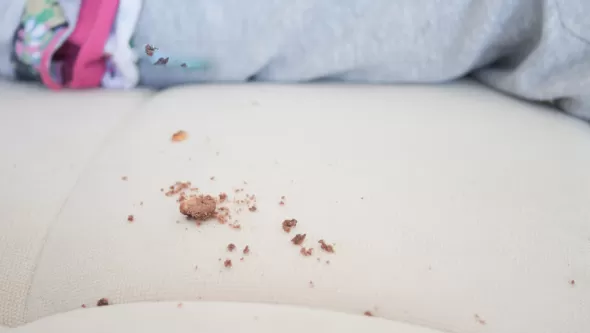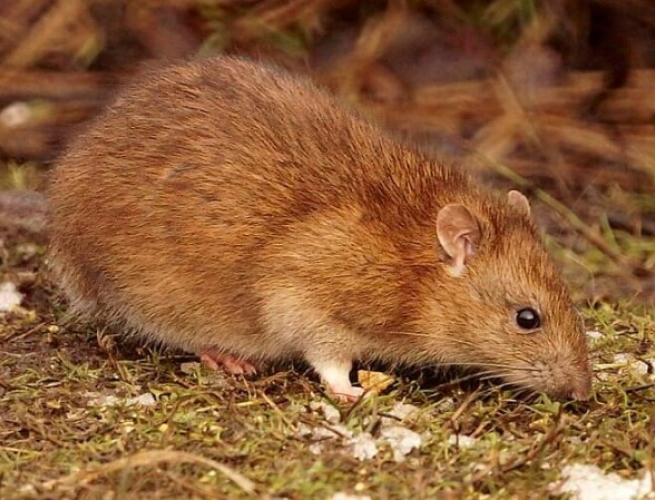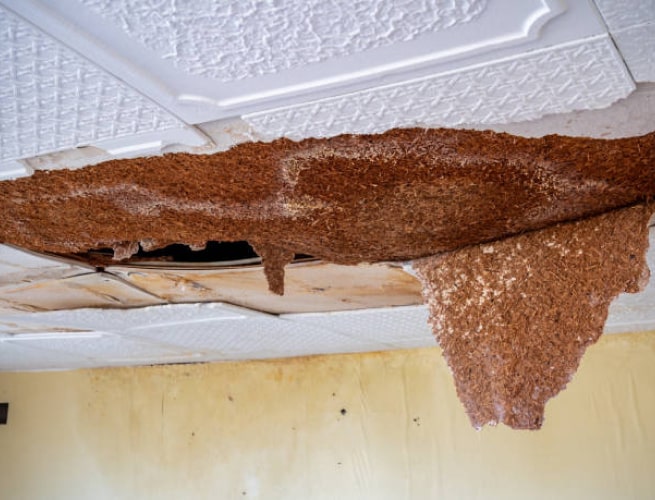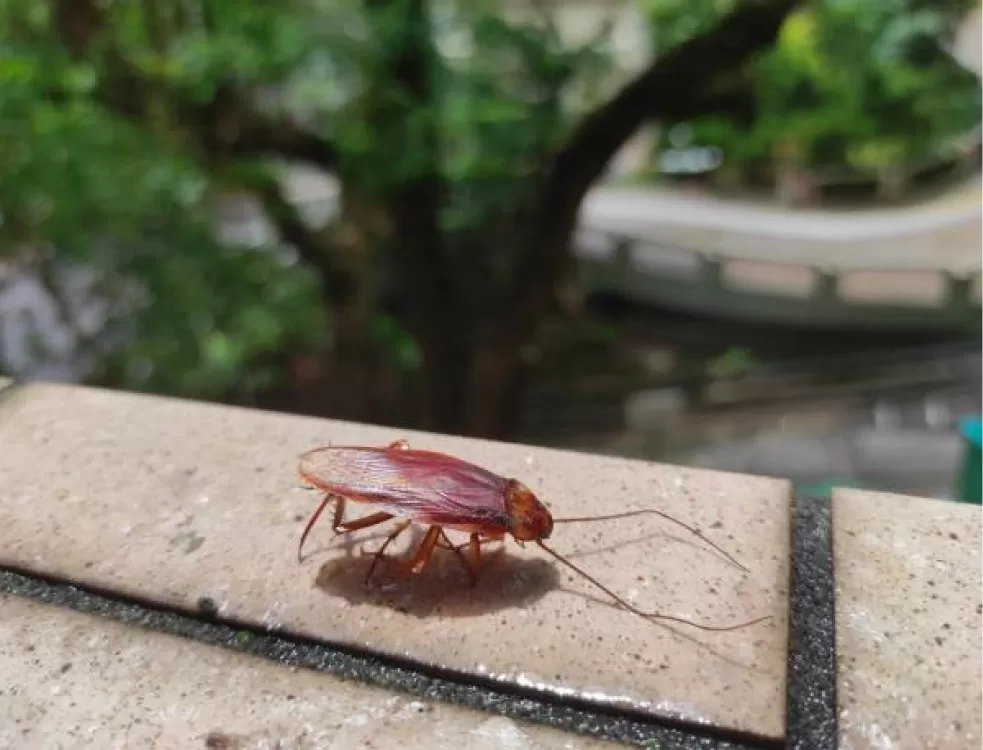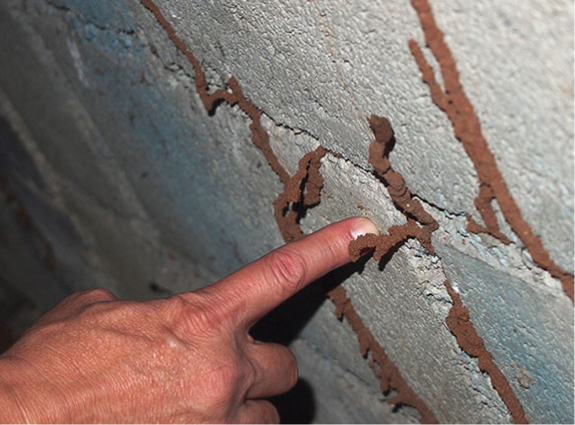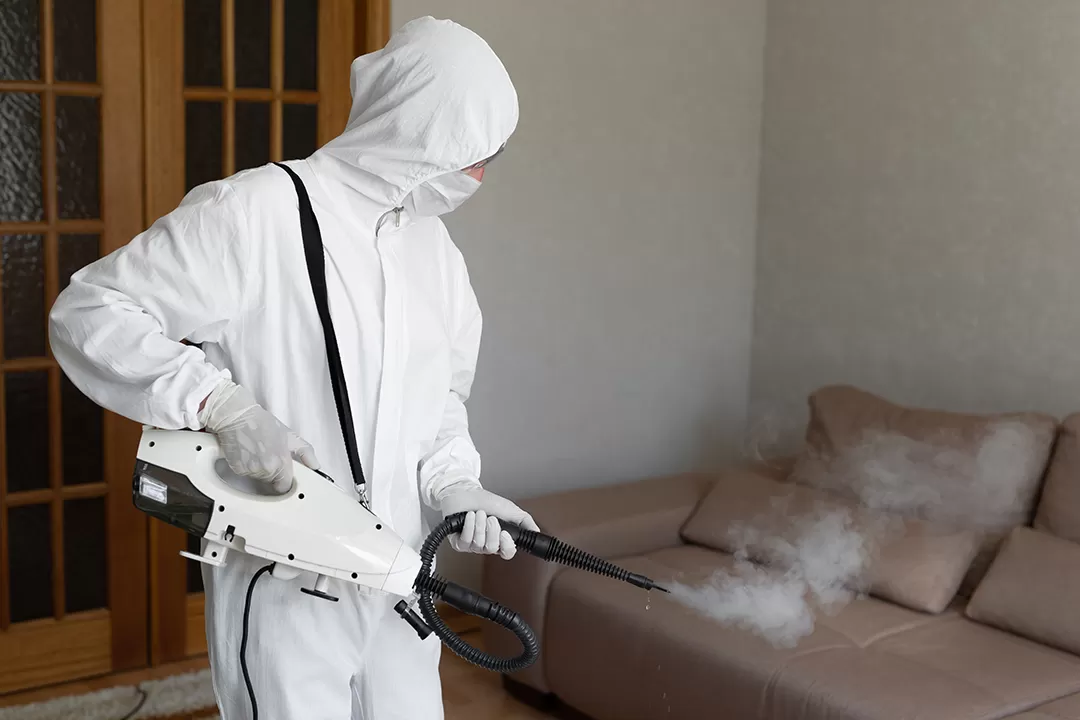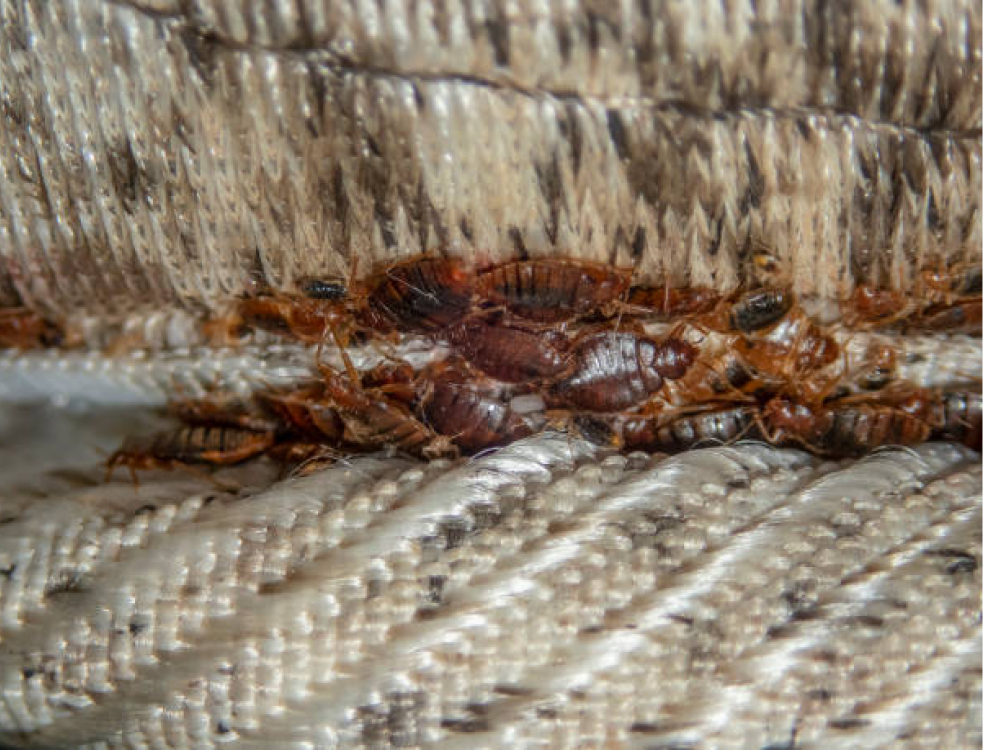Bed bug infestations can be quite distressing, often leaving individuals feeling uncomfortable and anxious in their own homes as they deal with bed bugs. Understanding the typical bed bug treatment and control process is crucial for regaining control and restoring peace of mind. This comprehensive guide outlines the key steps involved in addressing a bed bug issue, from initial inspection and preparation to the execution of treatment and follow-up care. It also delves into additional pest control services offered by Aardwolf Pestkare, provides tips for prevention, and answers common questions regarding the treatment process. Whether you are currently facing an infestation or simply seeking to protect your home and get rid of bed bugs, this guide serves as a comprehensive resource.
Key Takeaways:
- Before a bed bug treatment, expect a thorough inspection and identification of the infestation to determine the best course of action, including using products registered for pest management.
- Proper preparation of the infested area is crucial to the success of the treatment, including washing your clothes in hot water and vacuuming all fabrics after each use, and removing clutter.
- Aardwolf Pestkare offers various bed bug treatment options and will create a customized treatment plan to effectively eliminate the infestation and kill bed bugs on contact.
Inspection and Identification of Infestation
The first essential step in addressing a bed bug infestation is to conduct a thorough inspection and identify the signs of bed bugs in your living environment. This process entails examining areas where bed bugs are commonly found, such as the seams of mattresses, bed frames, cracks and crevices, and hiding places in furniture. For effective results, engaging a pest control Singapore specialist ensures that the inspection is comprehensive and the infestation is managed professionally.
Engaging a professional pest control company like Aardwolf Pestkare can be highly beneficial, as they possess the expertise and tools required to identify these pests effectively. This identification is crucial for successful treatment and management of bed bug bites. Prompt detection is vital, as bed bugs can rapidly multiply and escalate into a more severe infestation if not dealt with in a timely manner.
Preparation of the Infested Area
Preparing the infested area is a crucial step in effectively addressing a bed bug infestation and helps eliminate bed bugs. Before starting any treatment, it is important to declutter the space, vacuum thoroughly, and wash bed linens and clothing in hot water to eliminate any hidden bugs and eggs, and seal mattresses and box springs.
For items that cannot be washed, sealing them in plastic bags will help prevent the spread of bed bugs during the treatment process. By taking the time to adequately prepare the area, you are not only enhancing the effectiveness of the extermination efforts but also creating a safer environment for yourself and your family by addressing infested items.
Treatment Plan and Execution
Developing an effective treatment plan is crucial for successfully eliminating bed bugs and preventing future infestations by using a combination of methods. This plan often incorporates a combination of methods, including heat treatment, insecticide sprays, and non-chemical solutions such as diatomaceous earth, to target all life stages of bed bugs effectively.
A professional exterminator from Aardwolf Pestkare will evaluate the extent of the infestation and customize a treatment plan to address your specific situation, ensuring comprehensive coverage and optimal effectiveness.
It is essential to execute the plan properly, as this will kill the bugs and prevent their return.
Follow-Up and Monitoring
After treatment, it is essential to follow up and monitor the situation to verify the effectiveness of the pest control efforts and to prevent any potential resurgence of the bed bug infestation.
This phase includes conducting regular inspections to look for signs of bed bugs, such as bites or blood spots, and maintaining open communication with your pest control services provider for ongoing support to learn how to get rid of bedbugs.
Aardwolf Pestkare highlights the significance of this follow-up process to assess and prevent future infestations, ensuring that their pest management strategies have effectively eliminated these notorious pests from your home.
Additional Services Offered by Aardwolf Pestkare
Along with their expertise in bed bug control, Aardwolf Pestkare provides a wide array of pest management solutions specifically designed to tackle various infestations, including dealing with ants, roaches, and rodents, thereby safeguarding your home from multiple pests.
With their proficiency in handling common nuisances such as ants, roaches, and rodents, Aardwolf Pestkare delivers professional pest control services tailored to the individual needs of each client.
Their dedication to employing safe and effective treatment methods means you can confidently rely on them to create a pest-free environment for your family, using methods that are active at night.
How to Prevent Bed Bug Infestations in the Future?
Preventing future bed bug infestations is essential for maintaining a pest-free home by evaluating and preventing issues. This involves implementing several proactive measures along with regular monitoring of living spaces.
Key strategies include:
- Inspecting second hand furniture and typical hiding places
- Exercising caution with luggage during travels
- Routinely checking areas where bed bugs are known to hide, such as the seams of beds and furniture, and using a thermometer to check the temperature
The Centers for Disease Control highlights the importance of education regarding bed bug management and prevention, ensuring that you remain informed about the best practices to keep these pests away and prevent them from transmitting diseases.
What Are the Signs of a Bed Bug Infestation?
Identifying the signs of a bed bug infestation is essential for early detection and effective pest control. Common indicators include bug bites on the skin, small blood stains on sheets or mattresses, and a musty odor in the infested area which may become black or red. Recognizing these signs promptly allows individuals to take necessary actions, such as contacting a professional pest control company like Aardwolf Pestkare, to address the issue before it escalates into a larger infestation.
When examining for bed bug infestations, individuals may notice various symptoms ranging from physical signs to distinctive odors. Bug bites often manifest as small, red, itchy welts that can appear in clusters or lines on areas of the body exposed during sleep. Unlike bites from other insects, these welts tend to cause intense itching and can trigger allergic reactions in some people.
Small blood stains, which may resemble dots or streaks, can be found on sheets, pillowcases, and even mattress seams, indicating that bed bugs have been disturbed during feeding. Along with bites and stains, a musty odor can signal an infestation. This smell, often likened to spoiled berries, emanates from the pheromones released by bed bugs and may linger in the surrounding area. Early detection not only minimizes discomfort but also highlights the importance of seeking expert assistance to manage these pests effectively.
Neglecting these signs can lead to a rapid increase in the bed bug population, resulting in a more significant issue that becomes increasingly difficult to eradicate.
Here’s a quick summary of the signs to look out for:
- Bug bites: Small, itchy welts on the skin.
- Blood stains: Tiny reddish marks on bedding.
- Odors: A musty, unpleasant smell in infested areas caused by pheromones.
What Are the Different Types of Bed Bug Treatments?
Several effective bed bug treatments are available today, each designed to address these pests from different angles. These treatments can include chemical insecticides, heat treatment, and non-chemical methods such as diatomaceous earth, which can be combined for optimal results using bug bombs. It is essential to consult with a professional pest control service, such as Aardwolf Pestkare, to determine the most appropriate treatment plan based on the severity of the infestation and the specific needs of your home.
When considering bed bug treatments, it is important to evaluate the advantages and disadvantages of each option, including using a combination of non-chemical and chemical methods:
- Chemical Insecticides: These products can eliminate bed bugs quickly, but they may pose potential health risks to humans and pets if not applied correctly.
- Heat Treatment: This method effectively eradicates all life stages of bed bugs by exposing them to high heat. However, it requires specialized equipment and can be more costly.
- Diatomaceous Earth: A non-toxic, natural solution that can effectively dehydrate and kill bed bugs. While it is safe for the environment, it may take longer to see results compared to chemical treatments.
With numerous solutions available, seeking guidance from experts ensures that the chosen bed bug treatment aligns with both the environment of your home and your personal safety considerations.
What Are the Potential Risks and Side Effects of Bed Bug Treatments?
When considering bed bug treatments, it is essential to understand the potential risks and side effects associated with various methods. For example, chemical insecticides can pose health risks if not applied correctly, so it is vital to adhere to the guidelines set forth by the Environmental Protection Agency, which monitors the use of a pesticide. Consulting with a professional pest control expert can help mitigate these risks and ensure the safety of your family while effectively addressing the bed bug issue.
As you evaluate these treatment options, keep in mind that both chemical and non-chemical methods come with their own set of potential complications. For instance:
- Chemical treatments often involve pesticides that can be harmful to humans and pets if inhaled or ingested, especially in poorly ventilated areas.
- Non-chemical methods, such as heat treatments, involve a combination of non-chemical strategies and can risk damaging delicate fabrics and electronic devices if not executed with precision.
To enhance safety during your bed bug extermination efforts, it is advisable to:
- Ensure that all family members, including pets, are kept away from the treatment area.
- Wear protective gear, such as gloves and masks, when handling any heavy-duty chemicals.
- Read instruction labels carefully and follow all recommended safety practices.
Ultimately, seeking guidance from pest control professionals not only aids in effectively addressing the issue but also prioritizes the safety of everyone involved.
How Long Does a Bed Bug Treatment Take to Kill Bedbugs?
The duration of bed bug treatment can vary considerably, depending on the severity of the infestation and the methods employed. Typically, most treatments span from a few hours to several weeks, influenced by the selected treatment plan and the thoroughness of the pest control service. It is important to collaborate closely with a professional pest control provider, such as Aardwolf Pestkare, to clearly understand the timeline involved and to ensure an effective resolution to the infestation.
Several factors contribute to the overall timeline of bed bug treatments, including:
- Severity of Infestation: A light infestation may require fewer treatments and less intensive methods, while a severe case, characterized by many bedbug bites, could necessitate multiple visits and extensive measures to completely eradicate the pests.
- Methods Employed: Different treatment techniques, such as heat treatments, chemical sprays, or mattress encasements, can significantly influence how long it takes for treatments to show results.
- Property Size and Layout: The number of rooms and the complexity of the space can affect the time required for treatment. Larger areas may take longer to inspect and treat thoroughly.
In any case, engaging a qualified pest control service is essential for achieving lasting effectiveness while minimizing disruption to your daily life.
What Are the Costs of Bed Bug Treatment Services?
The costs associated with bed bug treatment services can vary significantly based on several factors, such as the severity of the infestation, the treatment methods selected, including whether they use Cimexa or other products, and the specific services offered by the pest control company. On average, homeowners might expect to spend anywhere from a few hundred to several thousand dollars for comprehensive treatment. Therefore, it is essential to budget accordingly and obtain estimates from professional exterminators, such as Aardwolf Pestkare, to ensure a fair and effective solution.
Understanding the full scope of bed bug treatment costs is vital for homeowners, as it provides valuable insight into their options. Several factors influence these prices, including:
- Infestation Level: A minor issue may only require an investment of a few hundred dollars, while a severe infestation could necessitate a more substantial expenditure.
- Treatment Methods: The costs associated with conventional methods, such as pesticides, often differ from those of alternative treatments like heat remediation.
- Company Reputation: Established pest control services may charge higher fees due to their experience and proven results.
It is crucial to clarify what each service entails. Some companies may offer an initial inspection at no cost, while others might include follow-up visits in their pricing structure. This transparency allows homeowners to make informed decisions without facing unexpected expenses down the line.
Frequently Asked Questions About Dealing with Bed Bugs
What should I expect during a bed bug treatment service?
During a bed bug treatment service, you can expect our team to thoroughly inspect and treat all areas where bed bugs may be present, including typical hiding spots like mattresses and furniture. This may include furniture, bedding, and cracks and crevices in walls and floors.
How long does a bed bug treatment service typically take?
The length of a bed bug treatment service will depend on the severity of the infestation and the size of the area being treated. Generally, treatment can take anywhere from a few hours to a full day.
Do I need to do anything to prepare for a bed bug treatment service?
To ensure the most effective treatment, we recommend removing clutter and washing all bedding and fabrics in the affected area before our team arrives. We also suggest vacuuming the area to help eliminate any live bed bugs.
What methods do you use during a bed bug treatment service?
Our team utilizes a combination of heat treatments, pesticide sprays, and vacuuming techniques to effectively eradicate bed bugs and their eggs. We ensure to vacuum after each use to remove bedbugs and prevent their spread. Our methods are safe and proven to be effective.
Are the pesticides used during a bed bug treatment service harmful?
The pesticides we use are specifically designed for pest control and are safe for use in residential and commercial settings. Our team takes all necessary precautions to ensure the safety of our clients and their property.
Do you offer any follow-up services after a bed bug treatment?
We understand that bed bugs can be persistent, which is why we offer follow-up services to ensure that the infestation has been fully eliminated. We also provide tips on preventing future infestations.

